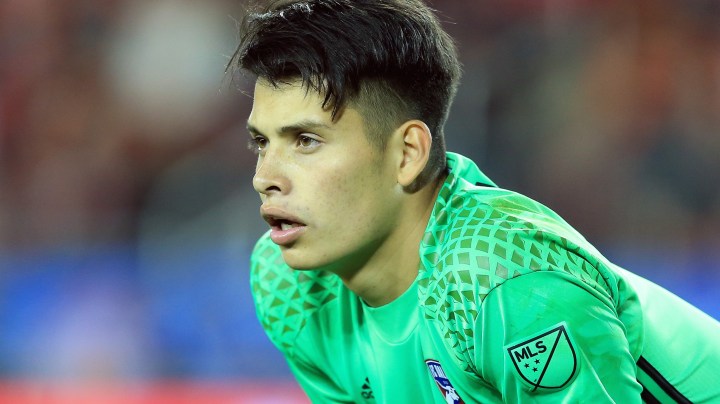Why Do Some Mexican Soccer Players Switch Allegiance to the United States?

Photo by Vaughn Ridley/Getty Images.
The world of international soccer nationalities is a convoluted mess of youth teams, coach persuasions, and one-time transfers. When a young player of any acclaim is eligible for multiple nations, those countries will battle for the ultimate prize: that player’s first senior team appearance, which–barring rare circumstances–will lock him into playing for that country for the rest of his international career. In certain cases, the competition comes between geopolitical rivals and neighbors, and few rivalries are more fraught with dual-citizenship woes than that between Mexico and the United States.
Given the close proximity of the countries, as well as the popularity of soccer in the Southwestern US and California, the two nations have had high-profile battles for prospects over the years. From Edwin Lara going to Mexico to Brandon Vasquez going the other way, players with the choice to represent either El Tri or the US men’s and women’s teams have left the opposite nation broken-hearted with their decisions.
Often times, it is the US that is left wanting by the competition, as Mexico has historically been a stronger soccer nation with a more appealing national team as the end goal. However, just this year, there have been two (very different) cases where both a male and a female player reneged on their youth team commitment to Mexico in order to suit up in the ol’ Stars and Stripes.
22-year-old Dallas FC goalkeeper Jesse González has yet to play for the United States senior team, despite a call-up as the last man in the Gold Cup roster. However, he did have 8 combined caps for Mexico’s U20 and U23 teams, and his choice to pick Mexico made headlines earlier this summer. All seemed well for El Tri, who were going to get one of the continent’s brightest goalie prospects. However, just a few weeks later, González decided to head for northern pastures, and he made the one-time swap official for the USMNT.
On the other side of the coin, Sofia Huerta, a striker for the Chicago Red Stars of the National Women’s Soccer League, did play for Mexico’s senior team, which should have locked her in. However, she made the decision in December of 2014 to petition FIFA to let her swap to the United States, a request that was finally granted on Thursday of this week. She will now join the defending World Champions, two years before the next World Cup.
In both cases, the common thread is that González and Huerta were born and raised in the United States. Despite having the option to play for Mexico–an option that Huerta took, before reneging on it–they chose instead to represent the country of their birth. That seems like a good enough to swap, and maybe it was, but there are more factors that play into choices like this.
For González, he must see the goalkeeping state of the US and smile giddily. Tim Howard is ancient by soccer terms, and his skills have not been the same over the last few years. His supposed replacement, Brad Guzan, has never been more than an average goalie on the international level. González could establish himself as the US #1 for the next decade with a few choice performances, likely starting with the run of friendlies that will come before the US heads to the World Cup…if they qualify, that is. The swap here seemed less about national pride–although he tried to spin it that way, saying “the U.S. has given me a lot. I’m grateful for what they have given me and the opportunity they have given me”–and more about potential playing time.
Huerta likely feels the same way; after Abby Wambach’s retirement following the 2015 World Cup, the USWNT attack has been less-than-championship material. The team’s penalty shootout loss to Sweden in the quarterfinals has been followed by lackluster results in friendlies and the She Believes tournament. If any team needs an injection of creativity and new blood, it’s the American woman, and Huerta could provide just that. Sure, Mexico probably needs her more, and she would be a better figure on that team, as El Tri is not at the level of the American women, but Huerta will also be key for the red, white, and blue, while competing for world titles. Now that FIFA has granted her the one-time switch, expect to see her called up in the next round of games for the USWNT, and it would be a disappointment if she doesn’t become a featured player in France 2019.
Despite national pride and the desire to pay tribute to one’s ancestry often helping these choices, players on both the men’s and women’s side of soccer often look at other factors, such as closeness to their club teams and, especially, playing opportunity. In the case of both González and Huerta, they have the chance to become stars for the US, and–in Huerta’s case–do it while challenging for a World Cup.